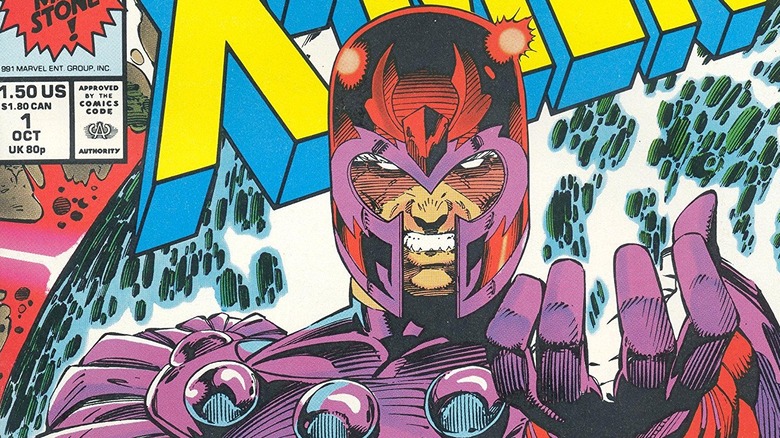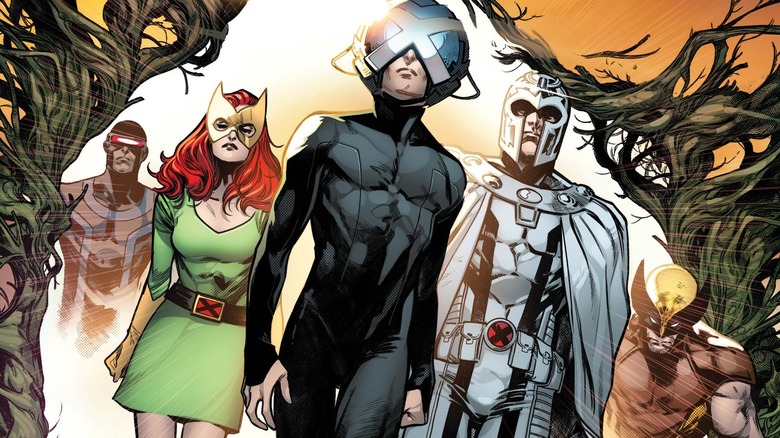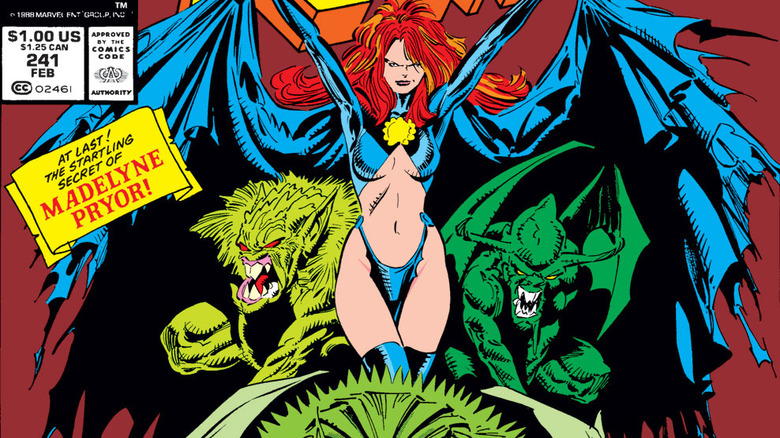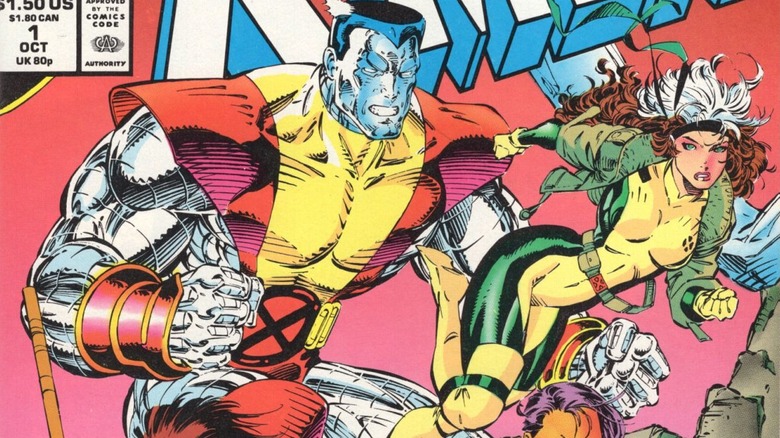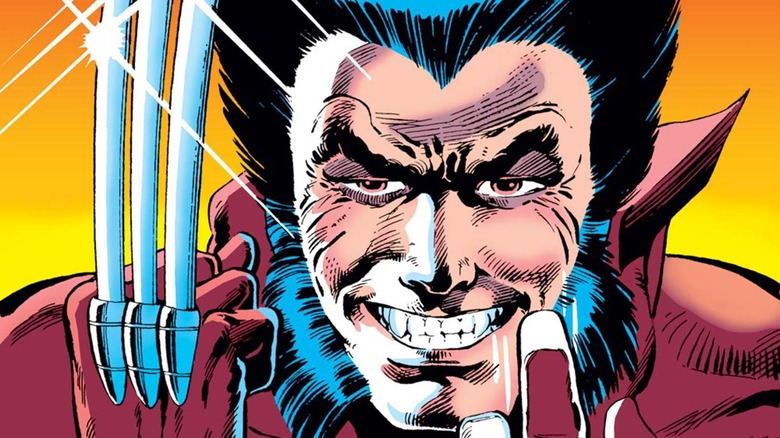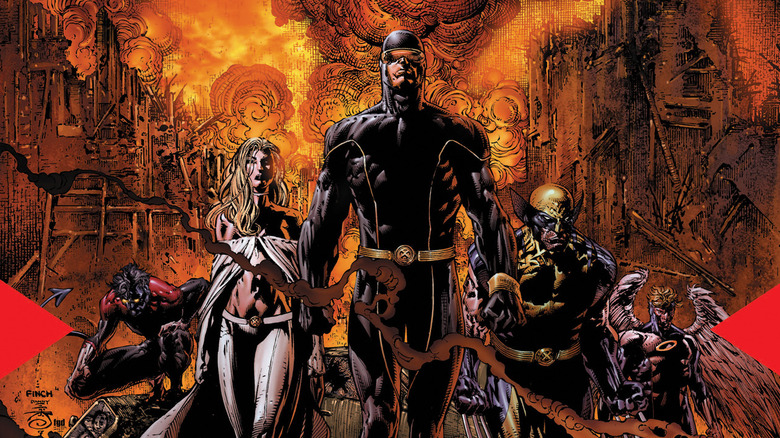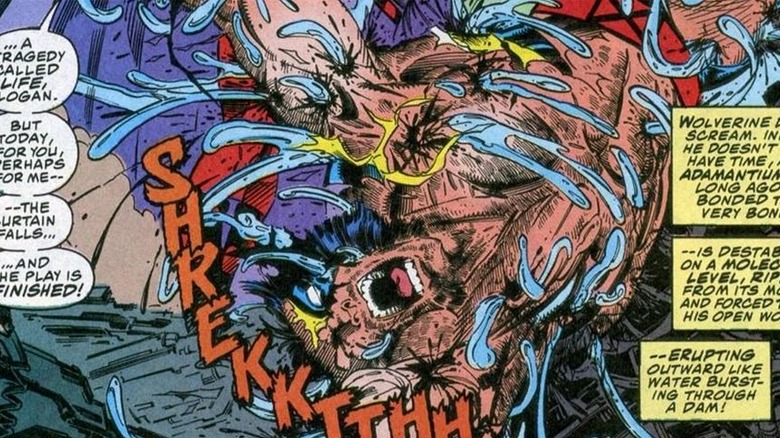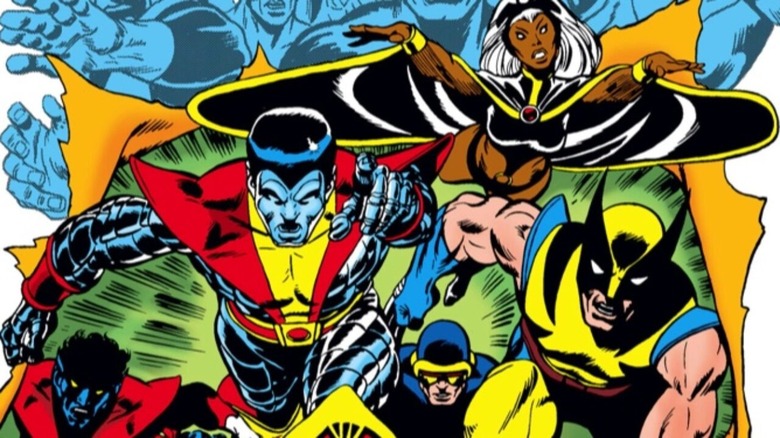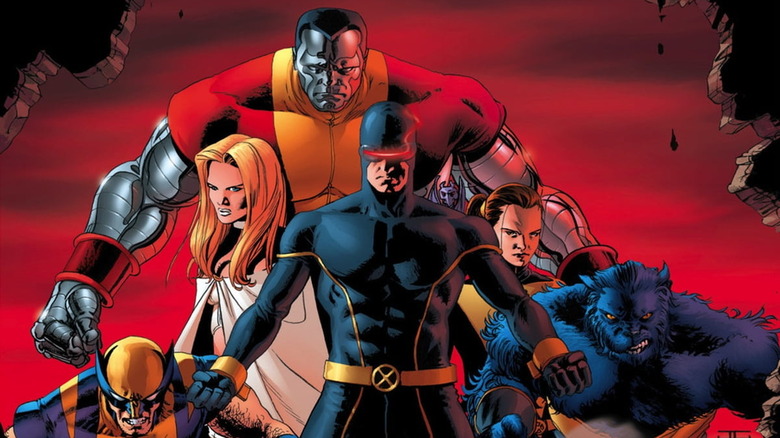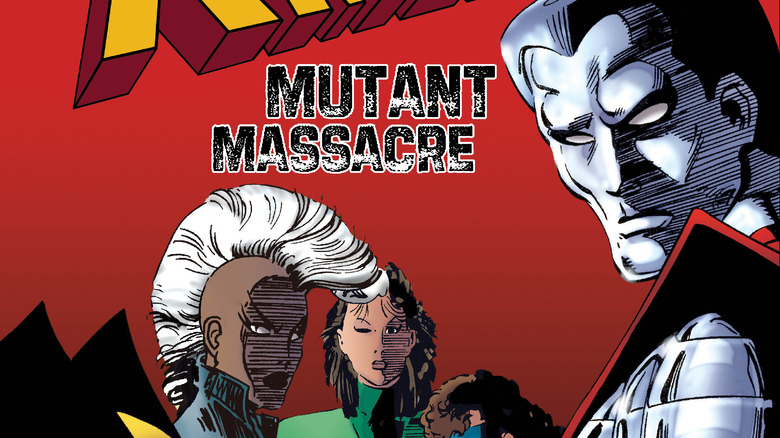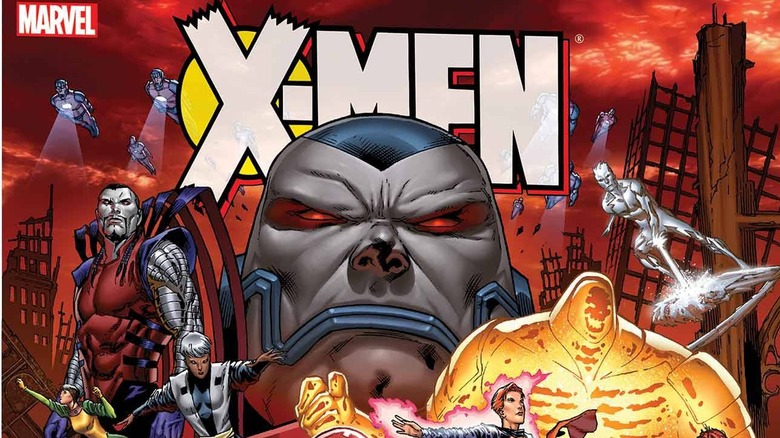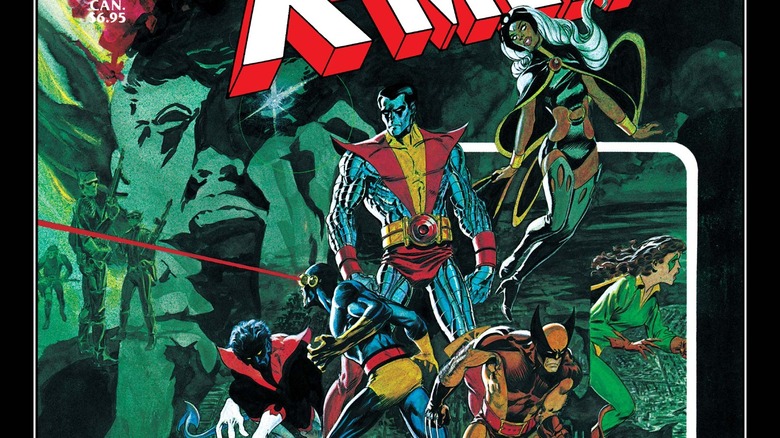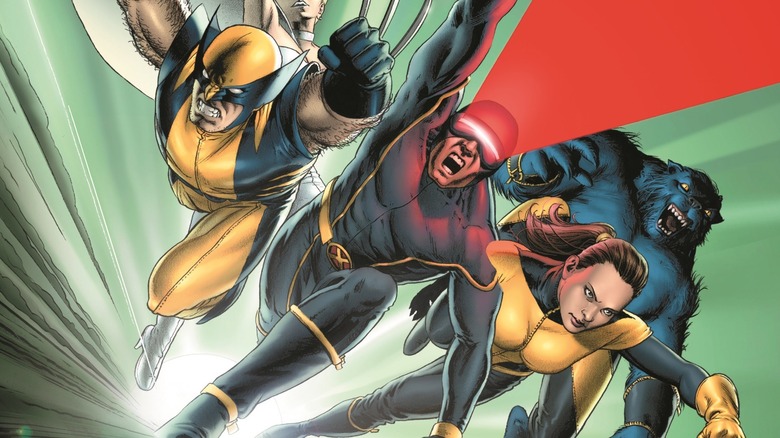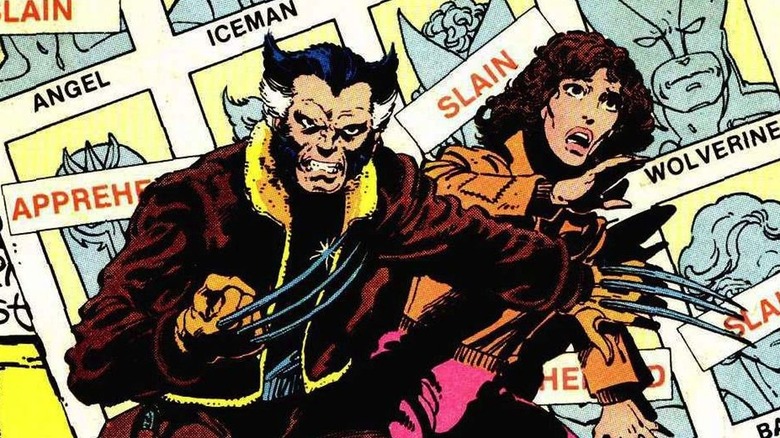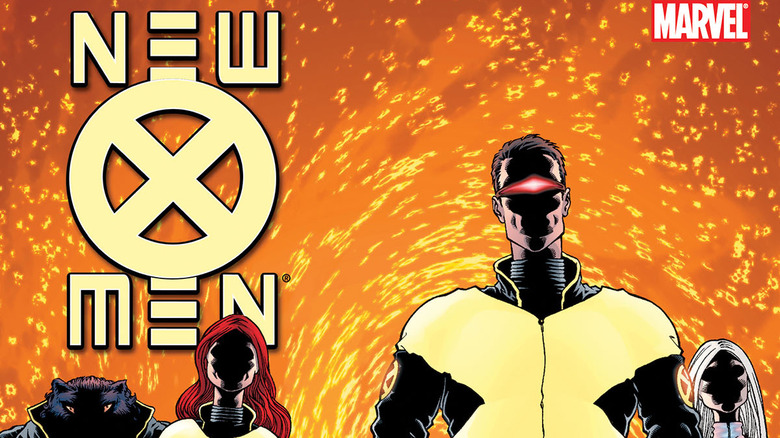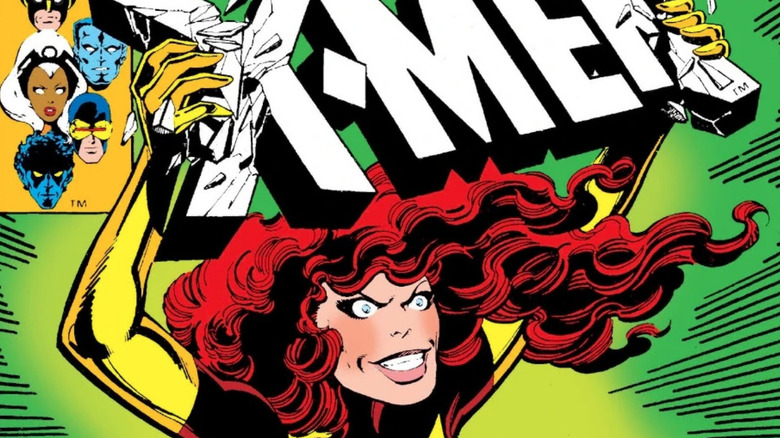The 15 Best X-Men Comics You Need To Read
The X-Men have been one of Marvel Comics' most beloved and enduring properties for decades now. First hitting the stands in 1963, the X-Men have since become a sprawling and complex franchise that fans continue to read today. Perhaps a big part of the X-Men's acclaim is because of the Merry Mutants' status as outcasts in a world that hates and fears them, a theme that will always have relevance in real-life society. What person has never felt like a misfit or been criticized simply for being different?
Over the course of more than a half-century, the X-Men have undergone numerous changes and spun off into countless series under different creative teams. Many characters have received one-shots, limited series, ongoing series, or all of the above. There are also a huge number of secondary teams, including X-Factor, X-Force, Excalibur, and more. Plus, let's not forget all of the crossovers that have taken place in the X-titles. Because of the ever-expanding continuity of the X-Men, it can be difficult for even die-hard fans to keep track of the heroes' complex lore, let alone welcome new readers. Luckily, we've created a guide that lists the 15 best X-Men comic storylines to help get you started.
15. House Of X / Powers Of X
"House of X" follows Professor X (now going simply as "X") as he establishes Krakoa as a new nation that welcomes all mutants, with Magneto serving as ambassador. However, this bold move by the X-Men catches the attention of Orchis, a group consisting of members of S.H.I.E.L.D., A.I.M., Hydra, and Alpha Flight, who are worried it may signal the coming downfall of homo sapiens. Meanwhile, "Powers of X" reveals secrets of the X-Men's past that have played an important role in their present, chronicling how their present actions will impact the future of mankind and how a key figure in their lives — once thought dead — has to do with these timelines.
The "House of X" and "Power of X" storylines may be the most recent featured on this list, but their importance to the X-Men canon is already solidified. Part of the "Dawn of X" relaunch spearheaded by writer Jonathan Hickman, these stories completely revamp the X-Men and radically update their place in the Marvel Comics universe, serving as the perfect jumping-on point for new readers.
14. Inferno
N'astirh and S'ym are demonic entities from Limbo, an otherworldly chaos dimension not unlike Hell, who set out to take over Earth with an army of fellow abominations. First, they manipulate Illyana Rasputin/Magik of the New Mutants into embracing her evil side and using her teleportation abilities to open a gateway to Earth. Then, the two demons begin their intrusion in New York City where their infernal troops attack Manhattan, with other heroes like the Fantastic Four, Power Pack, Daredevil, and more joining the fray. Meanwhile, the X-Men and X-Factor join forces against Madelyne Pryor, who has become the malevolent Goblin Queen as part of a deal she made with N'astirh and S'ym to help create a perpetual gateway between Limbo and Earth.
"Inferno" is not only a fun and often terrifying story, but it also had some deeply dramatic moments, like when Madelyne finally got to confront Scott Summers/Cyclops about his leaving her and their baby when he found out Jean Grey was alive, or when Illyana became irrevocably changed after her final sacrifice to save the world from Limbo's invasion.
13. Mutant Genesis
While Magneto had seemingly reformed and was even serving as a mentor to the New Mutants, his villainous tendencies were beginning to reemerge. However, before he went back to full-on villain, Magneto tried his hand at mutant isolationism, turning his old space base (Asteroid M) into a haven where mutants could live their lives without interference from regular homo sapiens on Earth. However, this move provokes the world's nations to threaten war, and so Magneto — initially just wanting to be left alone — aims several nuclear missiles at Earth for its actions against him. The X-Men set out to stop Magneto and beg him one last time to end his war against humanity.
"Mutant Genesis" was legendary writer Chris Claremont's final X-Men story (for a while, at least), and it's a fairly solid one, even if the subplot about Moira MacTaggert having unsuccessfully tried to "cure" Magneto of his evil when he was under care feels a bit contrived. However, this storyline (the first for the second flagship "X-Men" title) features amazing artwork from Jim Lee, with his redesigns inspiring the look of the classic animated series that came out a year later.
12. Wolverine
Wolverine takes a leave of absence from the X-Men and heads to the Canadian Rockies to live a roughneck lifestyle for a bit. However, Wolverine isn't able to enjoy his sabbatical for long, as the letters that he's mailed to the object of his affection, Mariko Yashida, are sent back to him. He tries calling her but is rebuffed by her family. This provokes Wolvie into heading to Japan to get some answers, but he must contend with Mariko's criminal family, the Yakuza, the Hand, and more on his quest to prove himself worthy enough to marry the woman he loves.
This classic 1982 limited series features terrific work from writer Chris Claremont and artist Frank Miller, who fleshed out Wolverine more than ever before. By focusing less on superpowers and more on character, readers got to see just how complex and layered Wolverine really is. Yes, his feral side is on full display here, but the story also delved deep into his struggle to contain his animal tendencies. "Wolverine" would go on to inspire the mediocre 2013 film, "The Wolverine."
11. Messiah Complex
A baby mutant, the first born after the "Decimation" storyline, is detected in Alaska. When the X-Men arrive, they discover the corpses of Marauders and Purifiers, but no baby. The X-Men conclude that the fight was over possession of the baby, and set out to find it before it falls into the wrong hands. It turns out that the baby has great importance to numerous sides: The Purifiers want to kill it as part of their longstanding campaign against mutants, Mister Sinister sent the Marauders to kidnap the baby for his own purposes, and Bishop wants to destroy the baby because he believes it will grow up to become a powerful mutant who kills countless innocent people in the future.
"Messiah Complex" deals with the fallout from the previous crossover event, "House of M," in which Scarlet Witch cast a spell that eliminated the powers of all but 198 mutants on Earth. It's a dark crossover with plenty of casualties, but it did end on a hopeful note for the future of mutant-kind when it seemed things were at their worst for them.
10. Fatal Attractions
Magneto has returned after his seeming death during his previous bout against the X-Men and has a group of powerful followers called the Acolytes. Because he has some malevolent plans in store for Earth (which he intended to carry out from his new space base, Avalon), Magneto invites the X-Men to join him before he launches his attack on the planet. While most of the X-Men rebuff him, Colossus — devastated by his sister's recent death — decides to join Magneto. Professor X, donning a special suit that allows him to walk, puts together a squad of X-Men to go into space and prevent Magneto from laying waste to the Earth.
"Fatal Attractions" was an important event in X-Men history, crossing over into all of the X-titles at the time, including "X-Factor," "X-Force," "Uncanny X-Men," "X-Men," "Wolverine," and "Excalibur." Not only did it bring back Magneto, his infamous fight with Wolverine revealed that underneath Logan's adamantium claws were real claws. It also resulted in Colossus' considerable time away from the X-Men, operating as a morally ambiguous hero. Several other major storylines grew out of "Fatal Attractions," like the X-Men/Avengers crossover "Bloodties" and the massive X-title crossover event "Onslaught."
9. Giant-Size X-Men #1
Cyclops has barely managed to escape the clutches of the living island, Krakoa, where he and the other X-Men were sent on a mission. Knowing that he and Cyclops aren't enough to save the missing teammates, Professor X travels the world and meets with other mutants he'd been keeping tabs on — Sunfire, Banshee, Wolverine, Storm, Colossus, Nightcrawler, and Thunderbird — and recruits them to go on another mission to Krakoa to rescue the other X-Men. With Krakoa defeated and the X-Men saved, this new team of mutants is made official members of the X-Men.
"Giant-Size X-Men #1" was released when "The X-Men" had essentially been canceled. No new stories were being published, and the series was merely reprinting old issues. The comic ended up being exactly what was needed to revitalize the struggling series and has since become an important and beloved comic since it was first unleashed on readers in 1975. With the inclusion of a whole new cast of diverse characters from around the world, "The X-Men" was able to appeal to a much larger audience than ever before.
8. Unstoppable
Following a battle with a new incarnation of the Hellfire Club, the X-Men are whisked away by S.W.O.R.D. (Sentient World Observation and Response Department) and end up on Breakworld, the homeworld of the alien mercenary Ord. The leaders of Breakworld are hellbent on destroying Earth with an unstoppable weapon: a massive bullet. While the X-Men are unfortunately unable to prevent the firing of the bullet, Kitty Pryde phases inside the bullet and phases it along with her, rendering it intangible as it harmlessly goes right through Earth.
Joss Whedon's time on "Astonishing X-Men" ended with such a bang that it was tempting to simply put the whole 25-issue run on this list. While not quite as epic in scope as the "Dark Phoenix Saga," Kitty's sacrifice packs almost as much of an emotional punch as Jean Grey's. Because the first arc began with the return of Peter Rasputin/Colossus and the rekindling of his romance with Kitty, it makes her ultimate decision all the more heartbreaking. This story would have lasting ramifications for years, as it kept Kitty hurtling around in space for a good while before finally returning to Earth.
7. Mutant Massacre
A group of violent mercenaries called the Marauders make their way into the tunnels of New York City and invade the underground community of mutant outcasts known as the Morlocks. The Marauders mercilessly kill countless Morlocks until they're stopped by the X-Men and X-Factor, who are there on separate missions and are unaware of each others' presence. Both teams, while successful in taking down the Marauders, are brutally beaten in the melee. Luckily, Thor and Power Pack are able to join in and lend a hand in the fight. However, even after the battle, the Marauders' Sabretooth makes his way to the X-Mansion to cause even more trouble.
"Mutant Massacre" was the first cross-title X-Men event, with the main story taking place in the pages of "The Uncanny X-Men," "X-Factor," and "The New Mutants," with additional plot elements occurring across "Thor," "Power Pack," and "Daredevil." It left a major impact on the X-Men's universe, including the loss of Warren Worthington III's wings, Kitty Pryde being trapped in her phased form, and planting the seeds for the introduction of longtime villain Mister Sinister.
6. Age of Apocalypse
David Haller/Legion, the mentally unstable son of Professor Xavier, went back in time to kill a young Magneto to prevent him from becoming a villain and killing countless people, but accidentally kills Professor X. This new history resulted in an alternate timeline, one in which Apocalypse has taken over North America. Mutants are now the ruling class, with most humans having been annihilated. Because of his complicated relationship with the timestream, Bishop is the only one who remembers the original timeline and must convince the other X-Men of his story to fix and restore the original timeline.
If you thought the alternate timeline of "Days of Future Past" was bleak, wait until you check out the one in "Age of Apocalypse." While previous storylines had established Apocalypse as a formidable villain, it was "Age of Apocalypse" that demonstrated just how powerful and maniacal he was. It was a bold move to completely change every X-title at the time, but it was necessary narratively to pull off such a grand story that paid off.
5. God Loves, Man Kills
Magneto is on the trail of Reverend William Stryker, who's responsible for the murders of two mutant children. Stryker has recently started a religious campaign against mutants, believing them to be a blight on God's creation. Stryker is so committed to his cause that he even previously killed his newborn baby for being a mutant, and his wife for giving birth to the child. Driven by a deep hatred of mutants, Stryker and his men abduct Professor X with plans of hooking him up to a machine that, powered by his psychic abilities, will kill all mutants on Earth. The X-Men reluctantly team up with Magneto to rescue Professor X and stop Stryker from carrying out his plan.
The fifth installment in Marvel's Graphic Novel series meant that writer Chris Claremont and artist Brent Anderson were able to explore darker, more mature themes about religion and prejudice. While there are plenty of superheroics to be found in this comic, it offers a sobering lesson on the dangers of letting one's beliefs lead to committing atrocities. "God Loves, Man Kills" was the inspiration for the excellent "X2: X-Men United."
4. Gifted
"Gifted" follows Kitty Pryde as she returns to Xavier's School for Gifted Youngsters and adjusts to life as both an X-Man and mentor to the incoming class of young mutant arrivals. However, prominent geneticist Kavita Rao announces her company's cure for the mutant "condition." Most of the X-Men are suspicious of the cure, believing it to be part of a larger, more sinister plot, but it does pique the interest of Beast, whose blue and furry appearance makes it hard for him to blend with everyone else. Terrible secrets are revealed, however, when the X-Men break into the manufacturing facility for the "cure."
Joss Whedon (of "Buffy the Vampire Slayer" and "Avengers" fame) kicked off this "X-Men" comics series, which followed up on Grant Morrison's legendary run on "New X-Men." Whedon's writing of each character and their relationships with one another was pitch-perfect, and (like "New X-Men" before it) wonderfully shook up the status quo of the team with lasting consequences. "Gifted" was such a beloved story that it was even partially adapted in 2006's "X-Men: The Last Stand," which unfortunately failed to live up to the power of its source material.
3. Days of Future Past
In the then-distant future of 2013, Sentinels have taken over the United States, and most superheroes are either imprisoned, in hiding, or dead. When the Sentinels decide to set their sights on the remainder of the planet, the handful of surviving X-Men send an aged Kitty Pryde's mind back in time to the then-present of 1980 to her younger self. Once there, she must convince that era's X-Men to stop Mystique and her Brotherhood of Evil Mutants from murdering Senator Robert Kelly, which will lead to renewed interest in cracking down on all mutants, bringing about a dystopian future.
While "Days of Future Past" only took place over two issues, it was still a shocking reminder of what a possible future could look like if hatred for mutants continued down its current path, and was oddly prescient of the "Terminator" franchise, which wouldn't debut until several years after the publication of this story. This storyline is so cherished that it was even the basis for 2014's "X-Men: Days of Future Past," which — while changing numerous aspects from the source material — still perfectly portrayed its themes and high stakes.
2. E is for Extinction
A mysterious and powerful woman named Cassandra Nova (who looks suspiciously like Professor X) takes control of an abandoned Sentinel manufacturing plant in an Ecuadorian jungle. However, it's not her assuming command of the leftover mutant-hunting Sentinels that made her such a vile villain, but what she ordered them to do: she directed the Sentinels to attack Genosha, an island nation populated only by mutants, and destroy the population. While Cassandra is ultimately stopped before she could use the X-Men's mutant-detecting device Cerebro to finish her malevolent plan, the storyline ends with a shocking public announcement from Professor X that would change the X-Men's place in the world forever.
Legendary comic book writer Grant Morrison's first story for the flagship "X-Men" series (which he had renamed "New X-Men") was just what the X-titles needed: a swift kick in the continuity. It brought about serious changes to their status quo, gave them startling new conflicts to contend with, introduced fresh concepts to mutant life in the Marvel Comics universe, and generally reimagined the X-Men for the new millennium.
1. Dark Phoenix Saga
Jean Grey barely survived her rescue of the X-Men on their return to Earth from a mission in space, wherein she was possessed by a powerful celestial force and became Phoenix. This all took place in "Uncanny X-Men" issues #101-108, but it didn't pay off until issues #129-138, which depicted the culmination of the Phoenix force's corruption of Jean. When the Phoenix-possessed Jean destroys a planet for sustenance the Shi'ar empire demands her execution, but her fellow X-Men come to her defense. Of course, they must also contend with the tragic reality that Jean will never be fully in control of her godlike powers, leaving it up to her how she should handle her fate.
The "Dark Phoenix Saga" is quite possibly THE signature X-Men storyline, the one that perfectly embodies the heroes' commitment to doing the right thing even when the world (or galaxy, in this case) hates and fears you. It's a powerfully moving story that Fox tried to adapt twice (in "X-Men: The Last Stand" and "Dark Phoenix"), but now that Marvel Studios has the rights to the X-Men back, here's hoping that we may finally get a proper cinematic adaptation within our lifetime.
